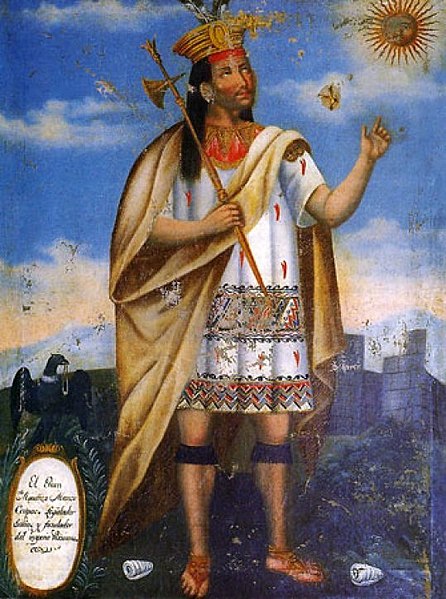Manco Cápac, also known as Manco Inca and Ayar Manco, was, according to some historians, the first governor and founder of the Inca civilization in Cusco, possibly in the early 13th century. He is also a main figure of Inca mythology, being the protagonist of the two best known legends about the origin of the Inca, both of them connecting him to the foundation of Cusco. His main wife was his older sister, Mama Uqllu, also the mother of his son and successor Sinchi Ruq'a. Even though his figure is mentioned in several chronicles, his actual existence remains uncertain.
18th-century painting depicting Manco Cápac, Cusco School.
Walls of Colcapata, which served as Manco Capac’s palace.
Temple on Isla del Sol (as seen in 1887) where the mummified body of Manco Cápac came to rest.
The Inca Empire, called Tawantinsuyu by its subjects, was the largest empire in pre-Columbian America. The administrative, political, and military center of the empire was in the city of Cusco. The Inca civilization rose from the Peruvian highlands sometime in the early 13th century. The Spanish began the conquest of the Inca Empire in 1532 and by 1572, the last Inca state was fully conquered.
Manco Cápac, First Inca, 1 of 14 Portraits of Inca Kings, Probably mid-18th century. Oil on canvas. Brooklyn Museum
An Inca prince accompanied by nobles, priests and warriors
The first image of the Inca in Europe, Pedro Cieza de León, Crónica del Perú, 1553
Sapa inkakuna, a 17th-century Cusco painting with the Inca lineages mentioned by colonial chronicles and their relationship with the royal queens of Cusco, which hide behind a complex representation of the Inca social organization.







